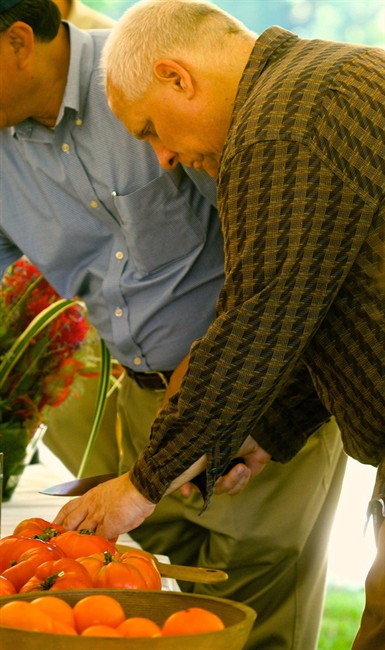
Tomato breeders seek better flavours, colours, genetic consistency, disease-resistance
Page through any of the freshly arrived seed catalogues and you’ll note the words “new” and “improved” splashed across many of the tomato varieties available to home gardeners for 2016.
New flavours, lively colours, different sizes, higher yields, and better disease resistance and pest tolerance are among the noteworthy traits.
Despite all the new varieties, however, breeders believe there’s still more room for development. The search for the perfect tomato continues.
“Iceberg lettuce is iceberg lettuce, but there are so many different kinds of tomatoes that we strive for perfection in a number of directions,” said George Ball, chairman and chief executive officer of W. Atlee Burpee & Co., in Warminster, Pennsylvania. “There are cherries, small round salad tomatoes, slicers and paste, among others.
“We define the perfect tomato for what it delivers in taste,” Ball said. “Everything else is delivery, with uniformity being a close second. We’re looking for consistency in size and shape. We don’t want a lot of different-looking tomatoes on the same plant. We’re also trying to bring out a vibrancy in colours.”
Tomatoes originated in the coastal highlands of South America and are second only to potatoes as the most consumed vegetable in the U.S., the Agricultural Marketing Resource Center says.
Over 700 different tomato varieties have been brought to market, and each year sees more new hybrids. But many consumers prefer the rich flavours and proven history of heirlooms — tomato types that have been cultivated for at least 50 years. We’re talking plants with a pedigree, like Brandywines, German Johnson, Persimmon, Beefsteak and Radiator Charlie’s Mortgage Lifter, the latter a large, meaty tomato introduced by a West Virginia radiator repairman to help him stay financially afloat during the Great Depression.
“We do carry many heirlooms, and while the flavour is quite good, productivity and disease resistance usually is not quite as good,” said Janie Lamson, owner of Cross Country Nurseries in Stockton, New Jersey, who sells more than 180 tomato varieties.
The solution to some of those problems is a tomato series called “heirloom marriages,’” says Sue Amatangelo, brand manager for Park Seed Co., a mail-order plant and seed operation in Hodges, South Carolina. That’s where two classic varieties are crossed to create a new tomato with the advantages of both.
“Varieties such as Genuwine — a cross of the heirlooms Brandywine and Costoluto Genovese — offer the deep, tangy tomato flavour and aroma lacking in so many modern varieties, combined with improved plant vigour, crop size and appearance,” Amatangelo said of that 2015 Park Seed introduction.
What else is on the way for tomato development?
Expect to see more blends from grafting, or attaching desirable fruiting varieties onto vigorous, disease-resistant rootstalks. Also look for more dwarf plants as gardening on patios and decks grows still more popular. Anticipate finding the right blends of acids with sugars to push tomato flavours forward.
And then there are weather adaptations.
“We’re going toward regionalization big time,” Ball said. Now, for instance, “in the Northwest, you can grow a great cherry tomato outside but you have to go to a greenhouse for the big steak varieties. We want to improve upon that.”
___
Online:
For more, see this Ohio State University Extension fact sheet: http://www.ohioline.osu.edu/hyg-fact/1000/pdf/1624.pdf
You can contact Dean Fosdick at deanfosdick@netscape.net
Join the Conversation!
Want to share your thoughts, add context, or connect with others in your community? Create a free account to comment on stories, ask questions, and join meaningful discussions on our new site.



















Leave a Reply
You must be logged in to post a comment.